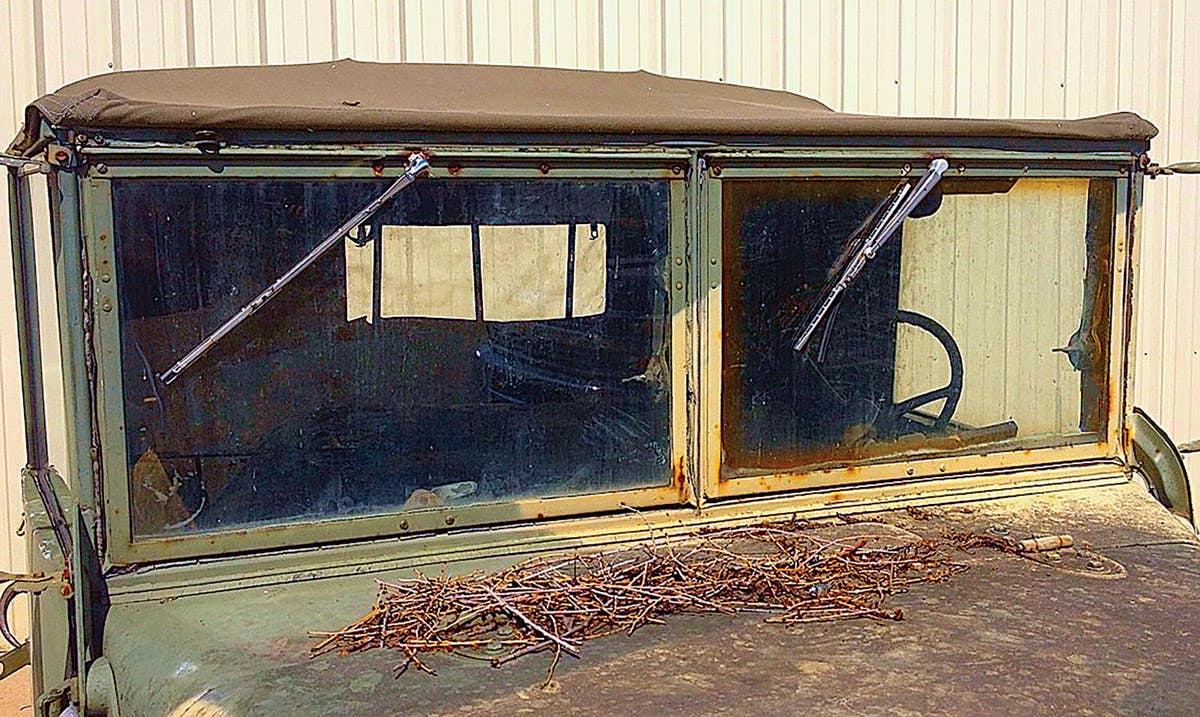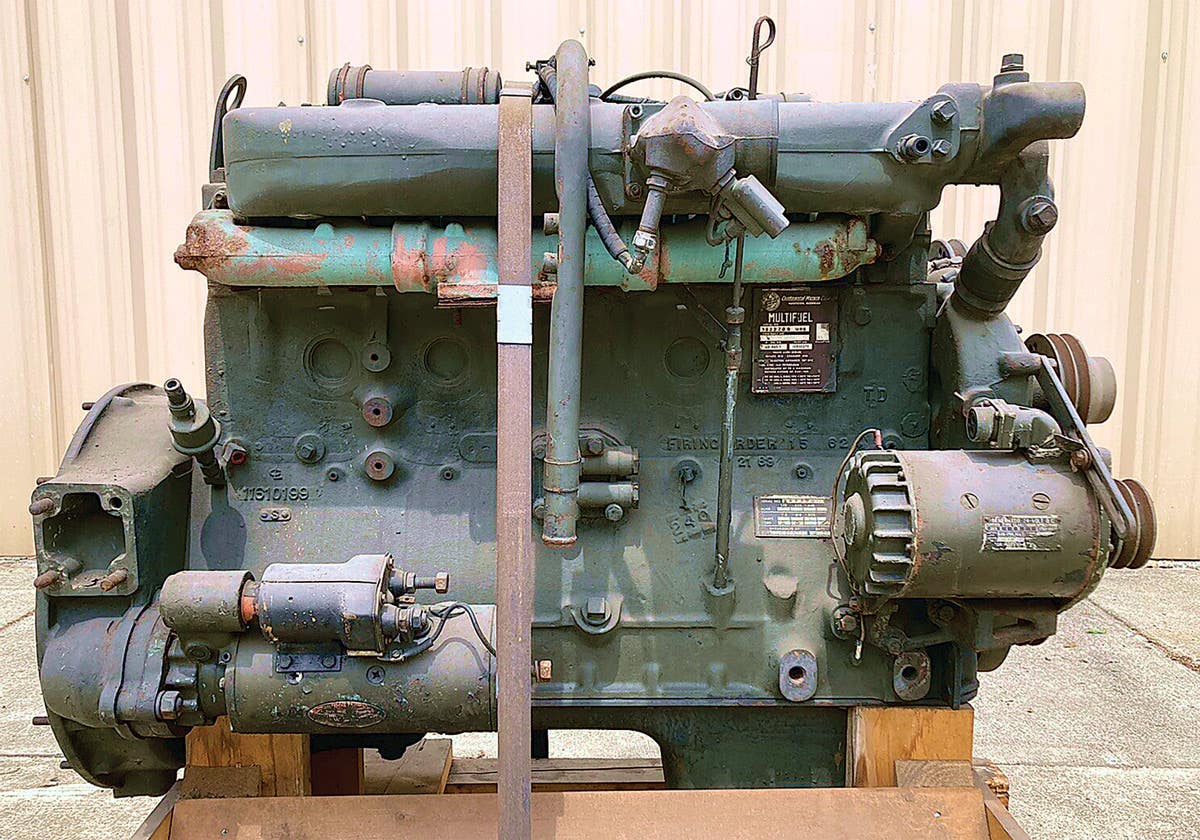The Ford GPA
A look at the Ford GPA, which some might say was a somewhat soggy “Seep.”
An introduction to the Ford GPA amphibious jeep – nicknamed “Seep,” either meaning “sea-going jeep,” or referring to its limited swimming abilities – would not be complete without first presenting a brief history of its larger and much more successful brother, the GMC DUKW.
In 1941, either in response to the Japanese attack on Pearl Harbor, or more likely prior to that infamous event and foreseeing the inevitably of the United States having to enter WWII, the U.S. Military pondered the problem of how to land troops and equipment from ships onto beaches and keep the landed forces supplied. Although there were various small landing craft, there was still the challenge of how to land soldiers and supplies over sandbars and coral reefs in waters too shallow for vessels to float yet too deep for vehicles to drive through.
In hope of solving this problem, the military engaged a marine designer, Rod Stephens Jr., to transform a GMC 2 1/2- ton truck into an amphibious cargo vehicle. Stevens went right to work and in less than Noah’s 40 days and nights designed and built what was basically a sheet-metal box to enclose the chassis of the truck so it could float, along with the necessary mechanical components to make it self-propelled when in the water; essentially a propeller and rudder.
One might say that although Stevens gave the military exactly what it had asked for – and, as was later proven, much more -- the military was not impressed with the prototype, and after giving it a cursory glance, and without any testing or sea-trials, decided it was a bad idea… or in 1940s jargon, “all wet.”
Stevens, however, had faith in his vehicle. Though the military refused to give it a chance, he built a few more and did his own testing. It was during this time that a storm hit the coast of Providence Town, Mass.,, and a Coast Guard vessel with seven crew members ran aground. Also at the time, one of Stevens’ new amphibious trucks was on promotional display nearby. It was pressed into service and was not only able to rescue the stranded seamen, but also put on an impressive show of its abilities in the heavy storm surf. Of course the news media covered the story, which went nationwide, and one might say the general opinion toward the generals who had rejected this sea-going truck was, “Hey, wet blankets, it works, buy it!”
And so it was. With the factory designation of DUKW, D representing the model year, 1942; U indicating the body style (utility-amphibious); K for all-wheel drive; and W for dual rear axles, 2000 DUKWs were manufactured in 1942 by GMC, and about 19,000 more were made in 1944.
With the DUKW making such a big splash, it was natural for the military to consider launching a smaller amphibious vehicle along the lines of the German Schwimmwagen, which was basically a swimming Volkswagen. Since the DUKW was a swimming truck, why not make a swimming jeep? Rod Stevens Jr. was again engaged to design a similar floating sheet-metal box and water propulsion system for a Ford GPW jeep, though he may have had misgivings about its weight-to-buoyancy ratio.
This time, the military decided to go through all the motions, and the Marmon-Herriginton company was also contracted in competition with Ford to build a small amphibious vehicle. (Marmon-Herrington had already been converting, and/or supplying components to convert, some Ford trucks to all-wheel drive.) The Marmon-Herrington prototype featured unibody construction, while the Stevens-designed Ford vehicle was based on the GPW frame chassis. Nevertheless, Ford’s amphibian weighed about 400 lbs. less than Marmon-Herrington’s, and since it used many already-existing and mass-produced jeep components, was cheaper to manufacture. Additionally, and like the DUKW with its driver compartment and controls very similar to CCKW trucks, the Ford vehicle’s driver compartment and controls were very similar to a jeep’s, making driver training simpler. So Ford’s vehicle was chosen for production with the factory designation, GPA, and the Quartermaster specification, 1/4 Ton Truck Light Amphibian.
While never official, the vehicle was nicknamed “Seep”. It either meant “sea-going jeep,” or referred to its limited aquatic abilities; and while about 12,778 were built in 1942/43, they proved to be far less successful in military roles than the DUKW.
The GPA was larger in outer dimensions than a jeep, but had less useful interior space. Its boxed-in chassis used the same jeep wheelbase and most of the jeep mechanical components, including the Willys-designed 134-cid, 60-hp engine, Warner T84 transmission, and Dana-Spicer 18 transfer-case, with the additions of a water propeller drive, rudder and bilge pump. The GPA also used a slightly modified version of a GPW windshield.
Although a potentially useful vehicle in concept, the GPA was handicapped out of the factory since the GPW chassis, axles and suspension system were only designed for a quarter-ton cargo capacity. With the addition of the amphibian body and water navigation components, it was already overloaded. The vehicle was also somewhat difficult for the driver and passengers to board when on land — not a desirable feature in combat. Other drawbacks included a lower-than-specified freeboard when in the water, so it could not safely carry much cargo or many personnel when afloat. It was also very “wet” in any sort of chop; its bilge pump was inadequate so it quickly filled and sank even in moderate seas, and was easily swamped in surf. All of which made it almost useless for sea-beach landings.
On the plus side, it performed well in calm water, so was useful for crossing rivers and ferrying troops and small cargos over water obstacles.
Its performance on land was also limited, primarily by its weight. It was too heavy and clumsy to handle like a jeep, often becoming mired in soft terrain through which a jeep could easily drive. Most personnel who had to drive GPAs were not fond of them; and most other nicknames besides “seep,” aren’t printable in this magazine.
Additional problems not related to the GPA’s limited performance were disputes between Ford and the government in regard to patents.
GPAs took part in the Sicily landings of September, 1943, during which their limitations soon became apparent. While a few GPAs were also deployed in North Africa, on various European fronts, and in the Pacific, much of the remaining production trucks were sent to the Soviet Union under Lend-Lease. While there doesn’t seem to be much information about how they were received in the USSR, one may assume the Soviet troops who had to drive them had the same negative feelings as the Americans.
Nevertheless, GPAs must have found useful niches in the USSR, because the Soviets copied them after WWII as the GAZ-46, which began production in 1952. However, the Soviets seem to have fixed most of the GPA’s problems, including weight and seaworthiness. The GAZ-46 was a much better amphibian, and was exported to some Warsaw pact countries, with a reported production of around 5,000.
Back in the U.S., many war-surplus GPAs were purchased by farmers, ranchers, hunters, campers, and HMV enthusiasts. One GPA, named (perhaps appropriately) Half-Safe, was even highly modified and driven/sailed around the world during the 1950s. The book, by the same name, is a very good read.
One might conclude that the GPA was – as is -- quite a remarkable vehicle despite its serious faults, but one better suited to calm water uses and civilian recreation than combat.







